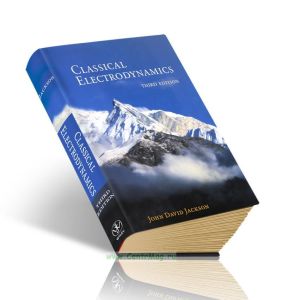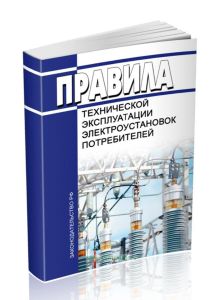- Артикул:00-01048880
- Автор: John David Jackson
- ISBN: 0-471-30932-X
- Обложка: Твердая обложка
- Издательство: John Wiley & Sons Ltd (все книги издательства)
- Город: USA
- Страниц: 832
- Год: 1999
- Вес: 2224 г
Classical Electrodynamics/Классическая электродинамика
Книга на английском языке.
Classical electromagnetic theory, together with classical and quantum mechanics, forms the core of present-day theoretical training for undergraduate and graduate physicists. A thorough grounding in these subjects is a requirement for more advanced or specialized training.
It has been 36 years since the appearance of the first edition of this book, and 23 years since the second. Such intervals may be appropriate for a subject whose fundamental basis was completely established theoretically 134 years ago by Maxwell and experimentally 110 years ago by Hertz. Still, there are changes in emphasis and applications. This third edition attempts to address both without any significant increase in size. Inevitably, some topics present in the second edition had to be eliminated to make room for new material. One major omission is the chapter on plasma physics, although some pieces appear elsewhere. Readers who miss particular topics may, I hope, be able to avail themselves of the second edition.
Contents
Introduction and Survey
1.1 Maxwell Equations in Vacuum, Fields, and Sources
1.2 Inverse Square Law, or the Mass of the Photon
1.3 Linear Superposition
1.4 Maxwell Equations in Macroscopic Media
1.5 Boundary Conditions at Interfaces Between Different Media
1.6 Some Remarks on Idealizations in Electromagnetism
References and Suggested Reading
Chapter 1 / Introduction to Electrostatics
1.1 Coulomb’s Law
1.2 Electric Field
1.3 Gauss’s Law
1.4 Differential Form of Gauss's Law
1.5 Another Equation of Electrostatics and the Scalar Potential
1.6 Surface Distributions of Charges and Dipoles and Discontinuities in the Electric Field and Potential
1.7 Poisson and Laplace Equations
1.8 Green’s Theorem
1.9 Uniqueness of the Solution with Dirichlet or Neumann Boundary Conditions
1.10 Formal Solution of Electrostatic Boundary-Value Problem with Green Function
1.11 Electrostatic Potential Energy and Energy Density; Capacitance
1.12 Variational Approach to the Solution of the Laplace and Poisson Equations
1.13 Relaxation Method for Two-Dimensional Electrostatic Problems
References and Suggested Reading
Problems
Chapter 2 / Boundary- Value Problems in Electrostatics: I
2.1 Method of Images
2.2 Point Charge in the Presence of a Grounded Conducting Sphere
23 Point Charge in the Presence of a Charged. Insulated, Conducting Sphere
2.4 Point Charge Near a Conducting Sphere at Fixed Potential
25 Conducting Sphere in a Uniform Electric Field by Method of Images
2.6 Green Function for the Sphere; General Solution for the Potential
2.7 Conducting Sphere with Hemispheres at Different Potentials
2.8 Orthogonal Functions and Expansions
2.9 Separation of Variables; Laplace Equation in Rectangular Coordinates
2.10 A Two-Dimensional Potential Problem; Summation of Fourier Series
2.11 Fields and Charge Densities in Two-Dimensional Corners and Along Edges
2.12 Introduction to Finite Element Analysis for Electrostatics
References and Suggested Reading
Problems
Chapter 3 / Boundary- Value Problems in Electrostatics: II
3.1 Laplace Equation in Spherical Coordinates
32 Legendre Equation and Legendre Polynomials
3.3 Boundary-Value Problems with Azimuthal Symmetry
3.4 Behavior of Fields in a Conical Hole or Near a Sharp Point
3.5 Associated Legendre Functions and the Spherical Harmonics Ylm (0, ф)
3.6 Addition Theorem for Spherical Harmonics
3.7 Laplace Equation in Cylindrical Coordinates; Bessel Functions
3.8 Boundary'-Value Problems in Cylindrical Coordinates
3.9 Expansion of Green Functions in Spherical Coordinates
3.10 Solution of Potential Problems with the Spherical Green Function Expansion
3.11 Expansion of Green Functions in Cylindrical Coordinates
3.12 Eigenfunction Expansions for Green Functions
3.13 Mixed Boundary Conditions, Conducting Plane with a Circular Hole
References and Suggested Reading
Problems
Chapter 4 / Multipoles, Electrostatics of Macroscopic Media, Dielectrics
4.1 Multipole Expansion
4.2 Multipolc Expansion of the Energy of a Charge Distribution in an External Field
4.3 Elementary Treatment of Electrostatics with Ponderable Media
4.4 Boundary-Value Problems with Dielectrics
4.5 Molecular Polarizability and Electric Susceptibility
4.6 Models for Electric Polarizability
4.7 Electrostatic Energy in Dielectric Media
References and Suggested Reading
Problems
Chapter 5 / Magnetostatics, Faraday's Law, Quasi-Static Fields
5.1 Introduction and Definitions
5.2 Biot and Savart Law
5.3 Differential Equations of Magnetostatics and Ampere's Law
5.4 Vector Potential
5.5 Vector Potential and Magnetic Induction for a Circular Current Loop
5.6 Magnetic Fields of a Localized Current Distribution. Magnetic Moment
5.7 Force and Torque on and Energy of a Localized Current Distribution in an External Magnetic Induction
5.8 Macroscopic Equations. Boundary Conditions on В and H
5.9 Methods of Solving Boundary-Value Problems in Magnetostatics
5.10 Uniformly Magnetized Sphere
5.11 Magnetized Sphere in an External Field: Permanent Magnets
5.12 Magnetic Shielding, Spherical Shell of Permeable Material in a Uniform Field
5.13 Effect of a Circular Hole in a Perfectly Conducting Plane with an Asymptotically Uniform Tangential Magnetic Field on One Side
5.14 Numerical Methods for Two-Dimensional Magnetic Fields
5.15 Faraday's Law of Induction
5.16 Energy in the Magnetic Field
5.17 Energy and Self- and Mutual Inductances
5.18 Quasi-Static Magnetic Fields in Conductors; Eddy Currents; Magnetic Diffusion
References and Suggested Reading
Problems
Chapter 6 / Maxwell Equations, Macroscopic Electromagnetism, Conservation Laws
6.1 Maxwell’s Displacement Current; Maxwell Equations
6.2 Vector and Scalar Potentials
6.3 Gauge Transformations, Lorenz Gauge, Coulomb Gauge
6.4 Green Functions for the Wave Equation
6.5 Retarded Solutions for the Fields: Jefimenko’s Generalizations of the Coulomb and Biot-Savart Laws; Heaviside-Feynman Expressions for Fields of Point Charge
6.6 Derivation of the Equations of Macroscopic Electromagnetism
6.7 Poynting’s Theorem and Conservation of Energy and Momentum for a System of Charged Particles and Electromagnetic Fields
6.8 Poynting's Theorem in Linear Dissipative Media with Losses
6.9 Poynting’s Theorem for Harmonic Fields; Field Definitions of Impedance and Admittance
6.10 Transformation Properties of Electromagnetic Fields and Sources Under Rotations, Spatial Reflections, and Time Reversal
6.11 On the Question of Magnetic Monopoles
6.12 Discussion of the Dirac Quantization Condition
6.13 Polarization Potentials (Hertz Vectors)
References and Suggested Reading
Problems
Chapter 7 / Plane Electromagnetic Waves and Wave Propagation
7.1 Plane Waves in a Nonconducting Medium
7.2 Linear and Circular Polarization; Stokes Parameters
7.3 Reflection and Refraction of Electromagnetic Waves at a Plane Interface Between Two Dielectrics
7.4 Polarization by Reflection, Total Internal Reflection; Goos-Hanchcn Effect
7.5 Frequency Dispersion Characteristics of Dielectrics, Conductors, and Plasmas
7.6 Simplified Model of Propagation in the Ionosphere and Magnetosphere
7.7 Magnetohydrodynamic Waves
7.8 Superposition of Waves in One Dimension; Group Velocity
7.9 Illustration of the Spreading of a Pulse As It Propagates in a Dispersive Medium
7.10 Causality in the Connection Between D and E; Kramers-Kronig Relations
7.11 Arrival of a Signal After Propagation Through a Dispersive Medium
References and Suggested Reading
Problems
Chapter 8 / Waveguides, Resonant Cavities, and Optical Fibers
8.1 Fields at the Surface of and Within a Conductor
8.2 Cylindrical Cavities and Waveguides
8.3. Waveguides
8.4 Modes in a Rectangular Waveguide
8.5 Energy Row and Attenuation in Waveguides
8.6 Perturbation of Boundary Conditions
8.7 Resonant Cavities
8.8 Power Losses in a Cavity; Q of a Cavity
8.9 Earth and Ionosphere as a Resonant Cavity: Schumann Resonances
8.10 Multimode Propagation in Optical Fibers
8.11 Modes in Dielectric Waveguides
8.12 Expansion in Normal Modes; Fields Generated by a Localized Source in a Hollow Metallic Guide
References and Suggested Reading
Problems
Chapter 9 / Radiating Systems, Multipole Fields and Radiation
9.1 Fields and Radiation of a Localized Oscillating Source
9.2 Electric Dipole Fields and Radiation
9.3. Magnetic Dipole and Electric Quadrupole Fields
9.4 Center-Fed Linear Antenna
9.5 Multipole Expansion for Localized Source or Aperture in Waveguide
9.6 Spherical Wave Solutions of the Scalar Wave Equation
9.7 Multipole Expansion of the Electromagnetic Fields
9.8 Properties of Multipole Fields, Energy and Angular Momentum of Multipole Radiation
9.9 Angular Distribution of Multipole Radiation
9.10 Sources of Multipole Radiation; Multipole Moments
9.11 Multipole Radiation in Atoms and Nuclei
9.12 Multipole Radiation from a Linear, Center-Fed Antenna
References and Suggested Reading
Problems
Chapter 10 / Scattering and Diffraction
10.1 Scattering at Long Wavelengths
10.2 Perturbation Theory of Scattering, Rayleigh’s Explanation of the Blue Sky, Scattering by Gases and Liquids. Attenuation in Optical Fibers
10.3 Spherical Wave Expansion of a Vector Plane Wave
10.4 Scattering of Electromagnetic Waves by a Sphere
10.5 Scalar Diffraction Theory
10.6 Vector Equivalents of the Kirchhoff Integral
10.7 Vectorial Diffraction Theory
10.8 Babinet's Principle of Complementary Screens
10.9 Diffraction by a Circular Aperture; Remarks on Small Apertures
10.10 Scattering in the Short-Wavelength Limit
10.11 Optical Theorem and Related Matters
References and Suggested Reading
Problems
Chapter 11 / Special Theory of Relativity
11.1 The Situation Before 1900, Einstein's Two Postulates
11.2 Some Recent Experiments
11.3 Lorentz Transformations and Basic Kinematic Results of Special Relativity
11.4 Addition of Velocities;-Velocity
11.5 Relativistic Momentum and Energy of a Particle
11.6 Mathematical Properties of the Space-Time of Special Relativity
11.7 Matrix Representation of Lorentz Transformations, Infinitesimal Generators
11.8 Thomas Precession
11.9 Invariance of Electric Charge; Covariance of Electrodynamics
11.10 Transformation of Electromagnetic Fields
11.11 Relativistic Equation of Motion for Spin in Uniform or Slowly Varying External Fields
11.12 Note on Notation and Units in Relativistic Kinematics
References and Suggested Reading
Problems
Chapter 12 / Dynamics of Relativistic Particles and Electromagnetic Fields
12.1 Lagrangian and Hamiltonian for a Relativistic Charged Particle in External Electromagnetic Fields
12.2 Motion in a Uniform. Static Magnetic Field
12.3 Motion in Combined. Uniform, Static Electric and Magnetic Fields
12.4 Particle Drifts in Nonuniform, Static Magnetic Fields
12.5 Adiabatic Invariance of Flux Through Orbit of Particle
12.6 Lowest Order Relativistic Corrections to the Lagrangian for Interacting Charged Particles: The Darwin Lagrangian
12.7 Lagrangian for the Electromagnetic Field
12.8 Proca Lagrangian; Photon Mass Effects
12.9 Effective ‘Photon’ Mass in Superconductivity; London Penetration Depth
12.10 Canonical and Symmetric Stress Tensors: Conservation Laws
12.11 Solution of the Wave Equation in Covariant Form; Invariant Green Functions
References and Suggested Reading
Problems
Chapter 13 / Collisions, Energy Loss, and Scattering of Charged Particles, Cherenkov and Transition Radiation
13.1 Energy Transfer in Coulomb Collision Between Heavy Incident Particle and Free Electron; Energy Loss in Hard Collisions
13.2 Energy Loss from Soft Collisions; Total Energy Loss
13.3 Density Effect in Collisional Energy Loss
13.4 Cherenkov Radiation
13.5 Elastic Scattering of Fast Charged Particles by Atoms
13.6 Mean Square Angle of Scattering; Angular Distribution of Multiple Scattering
13.7 Transition Radiation
References and Suggested Reading
Problems
Chapter 14 / Radiation by Moving Charges
14.1 Lienard-Wiechert Potentials and Fields for a Point Charge
14.2 Total Power Radiated by an Accelerated Charge: Larmor’s Formula and Its Relativistic Generalization
14.3 Angular Distribution of Radiation Emitted by an Accelerated Charge
14.4 Radiation Emitted by a Charge in Arbitrary1. Extremely Relativistic Motion
14.5 Distribution in Frequency and Angle of Energy Radiated by Accelerated Charges: Basic Results
14.6 Frcqucncy Spectrum of Radiation Emitted by a Rclativistic Charged Particle in Instantaneously Circular Motion
14.7 Undulators and Wigglers for Synchrotron Light Sources
14.8 Thomson Scattering of Radiation
References and Suggested Reading
Problems
Chapter 15 / Bremsstrahlung, Method of Virtual Quanta, Radiative Beta Processes
15.1 Radiation Emitted During Collisions
15.2 Bremsstrahlung in Coulomb Collisions
15.3 Screening Effects; Relativistic Radiative Energy Loss
15.4 Weizsacker-Williams Method of Virtual Quanta
15.5 Bremsstrahlung as the Scattering of Virtual Quanta
15.6 Radiation Emitted During Beta Decay
15.7 Radiation Emitted During Orbital Electron Capture: Disappearance of Charge and Magnetic Moment
References and Suggested Reading
Problems
Chapter 16 / Radiation Damping, Classical Models of Charged Particles
16.1 Introductory Considerations
16.2 Radiative Reaction Force from Conservation of Energy
16.3 Abraham-Lorentz Evaluation of the Self-Force
16.4 Relativistic Covariance; Stability and Poincare Stresses
16.5 Covariant Definitions of Electromagnetic Energy and Momentum
16.6 Covariant Stable Charged Particle
16.7 Level Breadth and Level Shift of a Radiating Oscillator
16.8 Scattering and Absorption of Radiation by an Oscillator
References and Suggested Reading
Problems
Appendix on Units and Dimensions
1 Units and Dimensions, Basic Units and Derived Units
2 Electromagnetic Units and Equations
3 Various Systems of Electromagnctic Units
4 Conversion of Equations and Amounts Between SI Units and Gaussian Units
Bibliography
Index
Рекомендуем
Артикул 00-00002163




